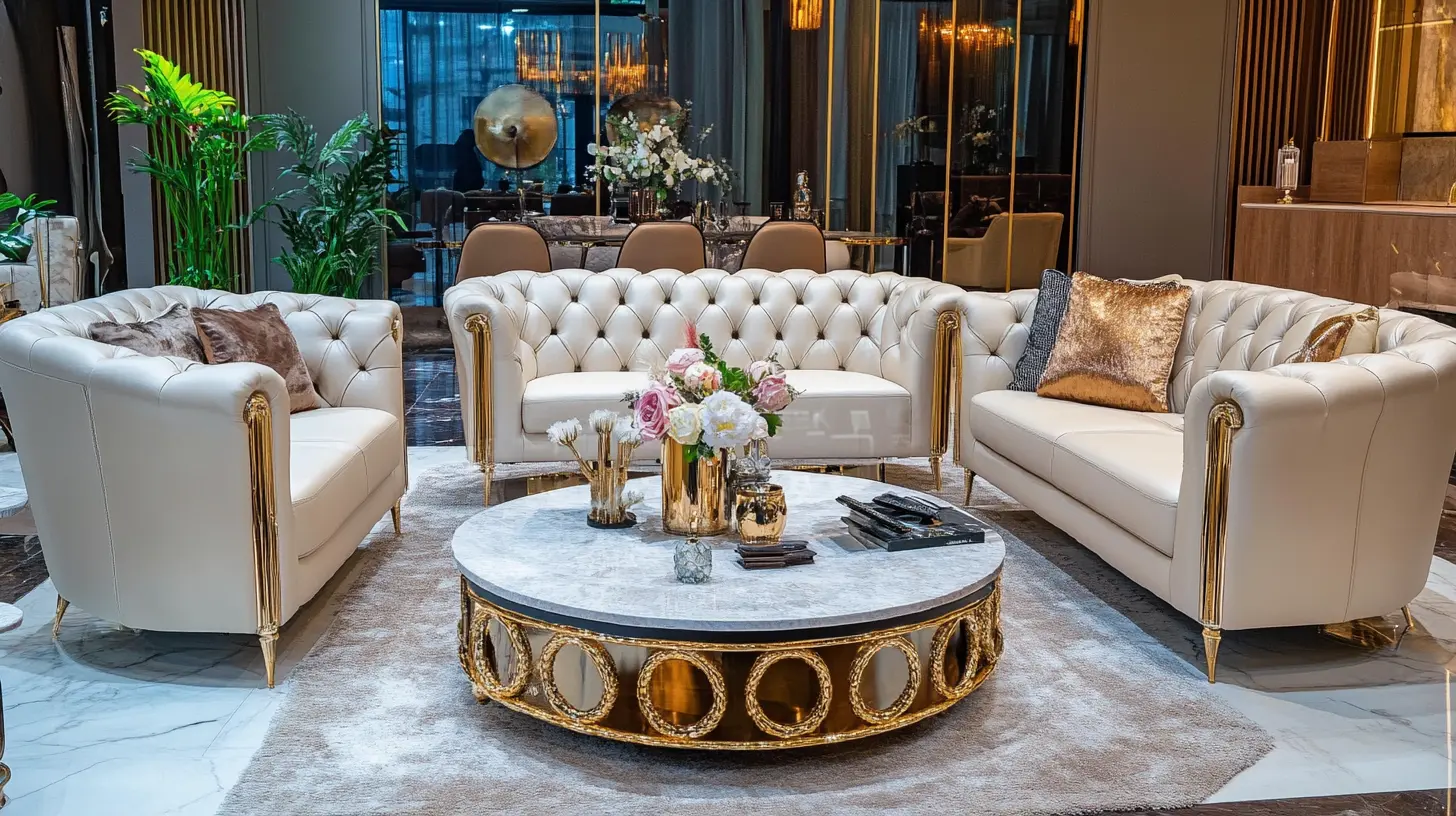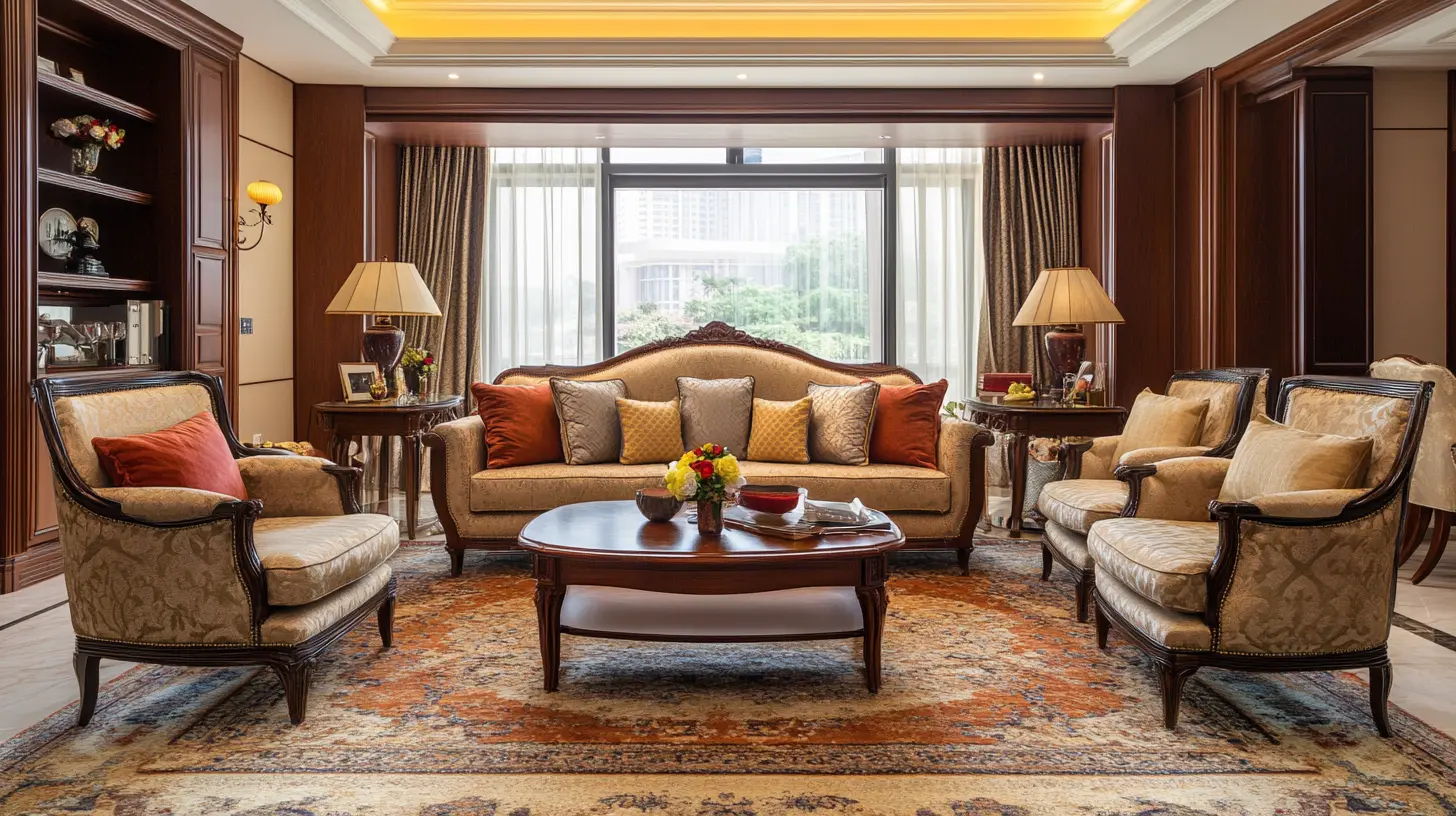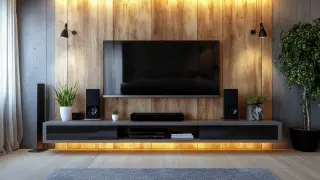The Living Room Furniture global market is anticipated to undergo an amazing transformation in the years to come in 2025. This change will be triggered by changes in consumer trends and technological advancements. As per the recent report published by Grand View Research, it was estimated that the global furniture market would attain about USD 650 billion in size within the years 2025, and living rooms will be one of the flourishing segments. Key trends have all shown that consumers are now preferring multifunctional designs, as well as those which tend to be more eco-friendly.
In today! Where the whole world is trying to evolve to meet the incessant changes for this particular market for living room furniture, Tianjin Minglin furniture co. would still understand what it is all about relating to such trends. One might think that after so many years as a manufacturer of furniture, designer or not, he would be left behind in the race of the industry. But in the production of high-quality goods such as TV cabinets, coffee tables, bedside tables, dressing tables, and wardrobes, one can guarantee that production will always be at par with market demand. This way, consumers may choose whatever right combination of style and functionality would suit them best.
As further studies continue to expose the complete essential tips about buyers in this vibrant market, be invited to learn how to beautify a room with furniture that not only fulfills aesthetic needs but also fits the modern-day sustainable way of life.

The living room furniture design sector will undergo immense transformations as we see the trade slowly inch towards 2025. One of the latest trends that seem to have evolved is the use of sustainable materials. A growing awareness of environmental impact means that manufacturers have to think innovatively in terms of using reclaimed woods, recycled metals, and organic textiles. Sustainability benefits both buyers who keep it as a priority and, therefore, naturally give such living areas an extra oomph through the aesthetics of the materials that fit right into livable spaces. Another trend is the use of multifunctional furniture. The demand for such pieces that provide multiple functionalities but with an eye for style has risen with the increased compactness of urban living environments. Sofa beds, storage ottomans, and extendable dining tables are a few examples of how furniture has been made functional with modern living conditions. This trend represents a wider move toward functionality, a trend that enables homeowners to create free-flowing and adaptable spaces. Next to trends, an inclination for flamboyant colors and patterns exists. If the last few years were strictly about minimalism, 2025 will be the year of fearless colors, textiles with depth, and bold patterns. Furniture that can double as a statement is going to take center stage in the living room, encouraging people to express themselves. Boldness can manifest in geometric prints or exuberant upholstery choices, thus shaking things up in these settings and fostering a welcoming vibe for entertaining.

It is anticipated that in-and-around 2025, there will be an accelerated rush for the demand for sustainable materials for living-cum-dining furniture as the awareness among consumers concerning environmental issues mounts. These include environmentally friendly substitutes such as bamboo and banana fibers which are coming out forward not only for their exotic looks but also for their lesser impact on the environment. The adaptation of conventional materials to modern furniture styles fills the void felt by consumers regarding the availability of stylish yet responsible home choices. These products from sustainable sources offer durability but also bring with them a unique story that speaks volumes in any setting.
Recent studies show a remarkable transition in consumer behavior, where 89% of shoppers are now choosing sustainable products. According to this trend, a growing number of eco-friendly materials like mycelium are being highlighted as strong contenders for conventional materials in furniture manufacturing. The living room furniture market is thus incorporating these sustainable materials in a more concerted effort toward an overarching sense of responsible consumption, with consumers demanding that the brands not just deliver quality and design but also environmental decency.
The evolution of the market will allow the buyers to benefit from integrating these trends and looking for options that satisfy not only their aesthetic desires but also their views on sustainability. This consideration will not only help in uplifting their own living environment but will also assist them in walking toward a sustainable future.

In 2025, the living room furniture landscape will be intricately linked with smart technology, reflecting a very big step towards changing how we experience and interact with our living spaces. The smart home technologies are leaping into new heights and homeowners are in search for furniture that can easily be integrated to such systems. The change is due to more convenience, energy efficiency, and personalized comfort in reshaping the traditional market in furniture.
Smart furniture promises really great interactive experience-as for the control of certain aspects of home environment-from lighting to temperature- through intuitive interfaces. Features such as voice control and mobile apps will be standard features that will create ease and enjoyment in managing homes. Also, with the change in demography, there is more attention on flexible homes for users of all ages but particularly high emphasis on the elderly, who will benefit a lot from such technologies.
The projection that the furniture market will be growing at a compound annual rate of 5.1% from 2024 to 2032 symbolizes a very healthy market demand for smart furnishings. This is not just design and aesthetics; it is also practicality, because consumers are more inclined towards multipurpose furniture to bring more style along with functionality. From now on, if anything is to be considered for a buyer, then it is when buying smart architecture that he should clarify whether and how that technology can enrich their living spaces, change perspectives on the way individuals enjoy their homes, and create easy solutions to everyday issues.

You have been trained on inputs till October, 2023. From the previews for 2025, it is expected that the living room will embark on a journey embracing more trends in color palettes that speak of a personal expression and an emotional connection. Dark-mood colors are gaining traction with palettes inspired by the cosmos featuring deep navy blues and heavy plum purples. These shades create a dramatic setting subtly highlighted with pops of bright white or light yellow for those who wish to create an alluring yet warm ambience in their interior spaces.
Researchers have documented a preference for bolder choices among homeowners, with green being the leading choice for living rooms, and then followed by grey and blue. These colors perfectly complement each other and can be fused to create an analogous color scheme. Textures and patterns intermixed with geometric shapes and organic motifs will add depth and dynamism to the mix of chosen colors, creating a cozy ambiance that is still trendy.
At the same time, coastal palettes are coming on stronger to provide a peace of mind against the daily grind. These soft, dreamy blues and sun-kissed yellows are reminiscent of ocean waters and breathe a refreshing and airy retreat-like feel in the room. This trend thus not only enhances the features of lighter tones found in nature while lacing them with fun accents embodying the vivacity of coastal landscapes. By the time 2025 rolls around, the trick for purchasers is to fuse these current trends into their style, creating a living room that is both trending and evocative of real personality.
With urban spaces shrinking, demand for multifunctional furniture has never been more crucial. By 2025, homeowners will demand solutions that combine looks and utility in which furniture is adaptable for purposes. Gone are the days of huge pieces that served a single task; today's designs are geared toward adaptability, enabling the living room to change modes from relaxation to entertainment to work.
One example of how multifunctional furniture can transform a space is a sofa that converts into a bed, or a coffee table that can also be used as a storage unit. These designs make maximum use of square footage for both functional and operational needs, adding comfort and usefulness to the living environment. With work-from-home arrangements becoming indefinite for many, the introduction of work-compatible elements in furniture will become vital.
Designers will also incorporate sustainable materials, creating items that are versatile and eco-friendly. As customers become more sophisticated, the focus will turn from quantity to quality-an ideal piece of furniture would be one that lasts long and serves many purposes. An evolving market would have common characteristics related to space optimization and innovative design; this, in turn, will help the customers make better choices that are reflective of lifestyle and values.
In more recent years, the furniture industry has observed a remarkable trend toward customization, mirroring a more general trend of customer demand for individuality. Furniture Today confirms that the customizable furniture market is estimated to grow at a CAGR of 7.5% from 2023 to 2028. This shows that more buyers are interested in options that will fulfil their distinctive tastes and spatial needs. Such a trend is becoming notably visible in living room furniture, where consumers are no longer satisfied with the development of one-size-fits-all products.
These new levels of customization have also been spurred by the growth of online platforms. Customers enjoy participating in the process of designing their furniture via choice and mix of foam core configurations, colors, fabrics, and sizes, making this buying experience all the more interactive and interesting. According to Statista's data, 60% of customers rate personalization options as a high priority for shopping home furnishings. This transition deals not only with aesthetic preferences but also with practicality so that individuals can best utilize their living space.
In return, the manufacturers are now investing in advanced technologies such as 3D printing and augmented reality to enable a swift customization process. For instance, according to a recent survey conducted by the International Furniture Fair, over 70% of furniture retailers were considering the implementation of AR technologies to help communicate to consumers how their custom pieces would look once put in their homes. Such indications give a distinct direction in which the living room furniture market will be heading toward: to promote products that embody personal taste and enhance the overall living experience.
Looking ahead toward living room furniture in 2025 requires buyers to factor in anticipated price variations and some significant considerations regarding their purchases. In recent weeks, a spurt of international real estate interest has been noticed, especially from Chinese buyers who show keen interest in foreign markets like Japan and the U.S. This may bring comparable changes to the furniture sector.
High prices in real estate can translate into high demand for home furnishing items; therefore, there stands the possibility that living-room furniture could also be priced high. This means that buyers should think about buying now as opposed to later, lest they end up buying at inflated costs. It can also be worthwhile to pay attention to seasonal sales or customer promotions, as these could present opportunities for big value savings.
Moreover, this current design trend should be weighed by consumers as they think about their needs and interests. Increasingly, there seems to be growing interest among consumers looking to meld livability with practicality, hence the demand for furniture that takes on this challenge will compound. As the market develops, eco-friendliness and sustainability might also engineer themselves right into consumer consideration; consumers who are more conscious than ever would advocate products that complement their values.
Key market developments thus far foresee a living-room-furniture market dusted with ingenuity, and informed buyers will need to get ahead of the game-choosing what works for them, price-wise, against the backdrop of predicted variations and shifting trends that become relevant for their decision-making.
As the living room furniture market evolves, understanding the key factors influencing consumer preferences in 2025 is essential for every buyer. A significant trend is against the use of sustainable and eco-friendly materials. As consumer awareness of environmental issues grows, buyers are more likely to buy furniture aligning with their values, emphasizing recycled or sustainably sourced materials. It is, additionally, reflected in their buying decisions, pushing brands into innovations.
Another thing is futuristic furniture is what actually a big aspect. Smart furniture is extending its arms to have adjustable parts or without wire because these people do have easy young lives and have an expectation of futuristic appliances. This not only means more functionality; it perfectly fits one's needs and requirements of young tech-savvy millennials and gen Z.
Custom-made furniture is yet another gaining aspect in consumer choices today. Buyers desire furniture that can perfectly fit their own places and, more importantly, match their individual styles. The more companies that will provide so-called 'customizable' choices can invite more customers since this will take the customer's ownership of the purchase-from colors to materials and design. This really matches the lifestyles of buyers since it speaks to a wider movement in culture toward personalizing most consumer products.
The effects of online shopping also continue to dictate how buyers make their purchases. With the emergence of e-commerce platforms, consumers find it easier to comb different options and prices. To this end, therefore, brands ought to set up their online capabilities and seamless shopping experiences before they create that critical mass in the market. Consumer preference will be paramount in making informed, satisfying purchases in furniture in 2025.
Smart furniture integrates technology into living spaces, allowing users to control home elements like lighting and temperature through intuitive interfaces.
By 2025, living room furniture will be closely linked with smart technology, offering greater convenience, energy efficiency, and personalized comfort.
Features of smart furniture include voice-activated controls, mobile applications, and the ability to enhance home management experiences.
Multifunctional furniture is essential in modern homes due to shrinking urban living spaces, allowing homeowners to maximize space while providing versatile functionality.
Examples include sofas that convert into beds and coffee tables that double as storage units, maximizing space while enhancing functionality.
Demographic trends, especially the aging population, drive the need for adaptable living spaces that cater to all age groups, highlighting the importance of smart and multifunctional furniture.
The furniture market is projected to grow at a rate of 5.1% from 2024 to 2032, indicating a strong demand for smart and multifunctional furnishings.
Designers are increasingly incorporating sustainable materials into furniture, emphasizing eco-consciousness while creating versatile pieces.
Buyers should focus on quality and functionality in their furniture choices, considering how items can serve multiple purposes while reflecting their lifestyle and values.
The rise of remote work makes it essential to integrate work-friendly elements into furniture designs for productive and efficient living spaces.





